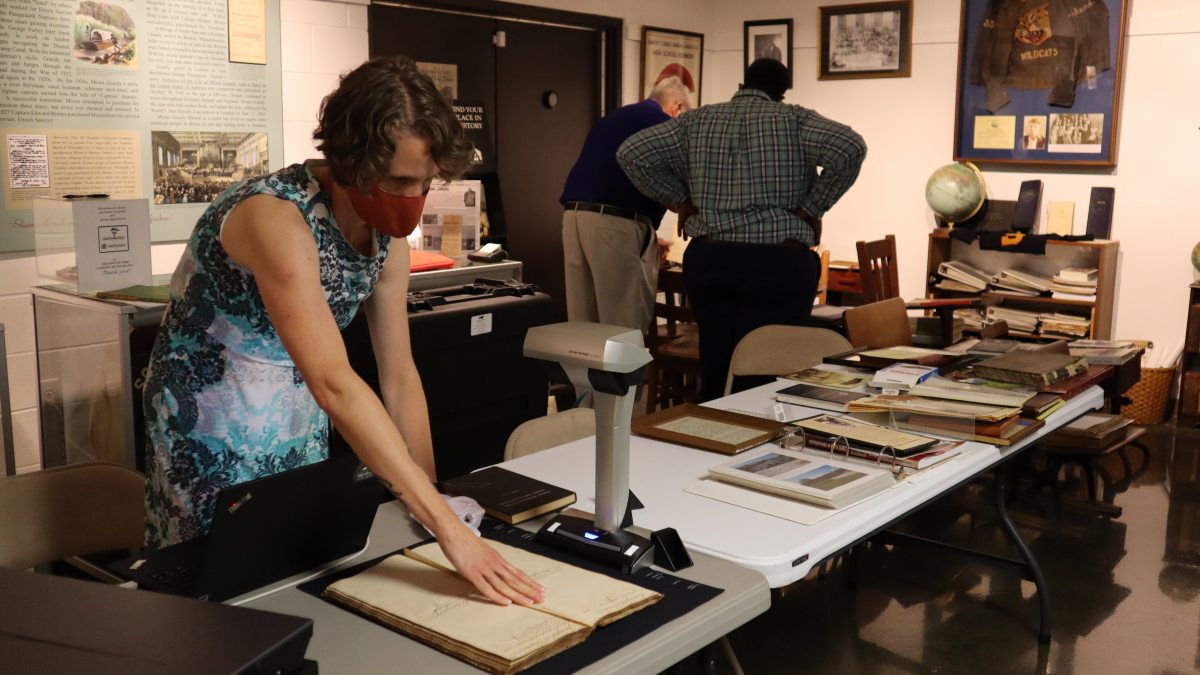UNC-Chapel Hill’s North Carolina Digital Heritage Center captures history from all 100 counties
Part of University Libraries, the North Carolina Digital Heritage Center aims to paint a picture of the lives of everyday North Carolinians throughout the centuries by digitizing historical materials from around the state.

For more than a decade, staff members at the North Carolina Digital Heritage Center, based in the University Libraries, have been archiving historical materials across our state to paint a picture of the lives of everyday North Carolinians throughout the centuries.
They’ve digitized more than 235,000 photos, newspapers, yearbooks and even wedding dresses and quilts from nearly every corner of the state to highlight various communities’ history and share it widely online at DigitalNC.org.
“It shows what someone bought at their local store in 1902 and took home to their farm. It’s photographs of local women’s clubs and events that happened in towns,” said Lisa Gregory, director of the North Carolina Digital Heritage Center. “It’s the type of content you won’t find on the Library of Congress site or sites focused on national interests. This is real North Carolina.”
Last week, Gregory and her team reached a major milestone in their effort to paint a more complete picture of the state’s history when they digitized materials from their lone outstanding county. On Aug. 31, the team traveled to Camden County in northeast North Carolina to digitize collections from the county’s heritage museum and the Dismal Swamp Canal Welcome Center. The Digital Heritage Center now houses digital items from all 100 of North Carolina’s counties — a milestone that required Gregory and her staff to sift through hundreds of thousands of pages and drive many miles throughout the state.
The center was launched in 2009 through a partnership between Carolina and the State Library of North Carolina. While the State Library funds the center, our University Libraries houses the expertise and equipment to digitize the materials. UNC-Chapel Hill, Gregory said, is a natural fit for the North Carolina Digital Heritage Center because the center’s goal aligns closely with that of the University’s mission of service to the state.
While many of the nearly 300 institutions that the center has partnered with over the last 12 years have their own facilities, they don’t necessarily have the technological capabilities and expertise to digitize their materials to put them online.
“Offering our services at no cost to institutions that have almost no funding to operate — they operate on volunteers — gets their materials out there to anyone who can access the internet,” Gregory said. “That’s something that would be out of reach without our help.”
In 2018, the North Carolina Digital Heritage Center’s efforts earned the center a spot as a finalist for the National Medal for Museum and Library Service, the nation’s highest honor for museums and libraries that recognizes exceptional service to the community.
Ensuring that the center provides its service to every community in North Carolina is crucial for Gregory and her team.
“It doesn’t matter how rural you are,” Gregory said. “If people live there, there’s history there. We want that history to be shared.”
With the goal to include all 100 counties in the digital collection, Gregory and her colleagues began reaching out to residents in Camden County and connected with the county’s public library and the welcome center at the Dismal Swamp Canal. Sarah Hill, the director of the welcome center, worked with volunteers at the county’s museum to coordinate having their collection of photos, newspaper articles and store ledgers archived by the North Carolina Digital Heritage Center.
The materials, Hill said, had been collected mostly by dedicated volunteers at the museum and are items being passed down by family members. Now set to be part of the digital collection at DigitalNC.org, Hill hopes the materials can reach a broader audience to shine a light on Camden County residents.
“It was a great opportunity and resource for not only Camden County residents, but also for folks interested in genealogy or learning more about Camden County but don’t have the ability to visit the museum,” she said. “It’s a great resource for everybody to enjoy and explore online. Hopefully, it’ll draw more attention to Camden County.”
Finally capturing history from all 100 North Carolina counties, Gregory said, means more than just adding to their extensive collection. It’s a celebration of state-wide collaboration and years of work by Carolina students and staff members.
“It feels like a lot of hard work is paying off,” she said. “I think the fact that they’re now going to be represented, along with all the other content we have online, is just really meaningful to every staff member who works here.”




